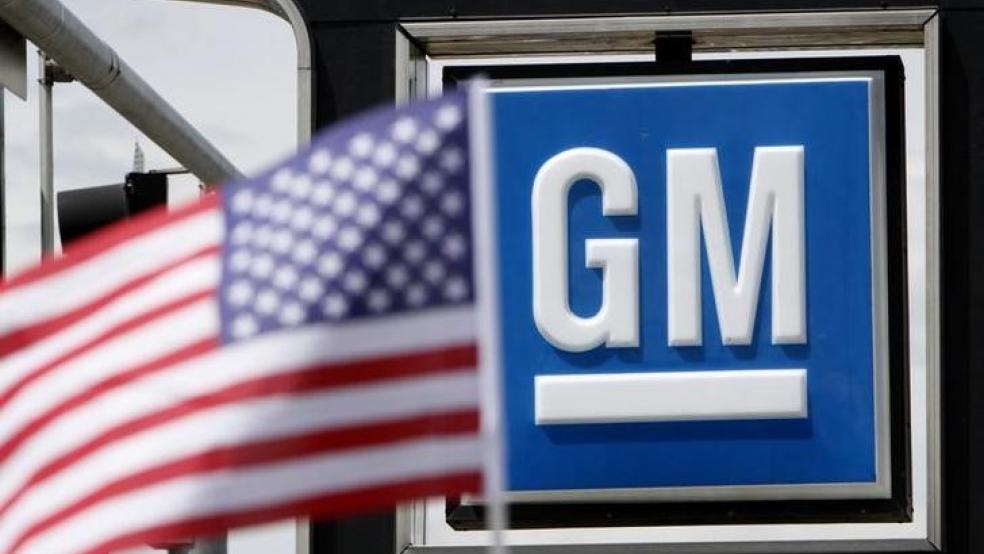It used to be easy to buy an American car: You’d go to the lot, pick out a vehicle built by the Big Three and drive home confident that you’d made the patriotic choice.
These days, it’s much more complicated. One of the Big Three is no longer headquartered in America, and the vast majority of their cars are built from imported parts. It’s tough to pin down the nationality of a Chrysler which is now owned by an Italian company headquartered in the United Kingdom.
The recently released 2015 American-Made Index from Cars.com, which ranks cars with at least 75 percent domestic content, has just seven cars on it. That’s down from 29 cars five years ago.
The top-ranking vehicle, the Toyota Camry, may be made by a Japanese manufacturer, but it rolls off of assembly lines in Georgetown, Ky., and Lafayette, Ind.
“People have to figure out what their definition of an American made car is,” says Carol Lachnit, features editor at Edmunds.com. “Does that mean a car that is made in America? Because cars that are made in America may not be made by American companies.”
Related: Wanted in 2015: A Car No One Else Has
Contributing to the economy
Those “non-American” cars are a major factor in the U.S. economy. Japanese car manufacturers and dealers were responsible for 1.36 million job in 2013, 10 percent more than in 2011, according to a paper by Rutgers professor Thomas Prusa. Those jobs pay American workers more than $85 billion.
Japanese manufacturers aren’t the only foreign auto producers creating American jobs. BMW announced last year that it would invest a $1 billion in its South Carolina plant, making it its biggest factory in the world.
Nearly three-quarters of the cars produced at the BMW factory are sold overseas. U.S. auto exports in general are increasing. Last year more than 2.1 million American built cars were sold overseas, The Wall Street Journal reports.
Even as the trend toward automakers using more imported parts grows, the number of cars being assembled in the United States is increasing. Last year, American auto plants assembled more than 100 models of new cars, according to Cars.com. That’s partly due to the weak dollar in recent years (and may change given is newfound strength), and partly due to the weakened power of unions following the Great Recession. The Asian and European factories in the South are largely not unionized.
Wages for autoworkers generally are on the decline. Employees at motor vehicle manufacturing plants earned a median $24.83 per hour in 2013, down 21 percent in the past decade, and employees at parts manufacturers earned an average $15.83, down 13.73 percent over 10 years, according to a November report by the National Employment Law Project.
Related: Car Companies Grab Loan Business From Banks
Finding American-made cars
Three of the four top cars on the American Made Index came from Honda and Toyota. The Ford F-150, which was the top vehicle on the list last year, fell off entirely, since the 2015 model gets more parts from overseas. Consumers interested in learning where a car was assembled can check the VIN. If it starts with a 1, 4, or 5, you can be confident that auto was assembled in a U.S.-based plant.
That may not satisfy consumers who want a vehicle comprised of American made parts. They’ll have to do some research on their own, since the American Automobile Labeling Act, which certifies car as being made in America with an AALA sticker, is a notoriously poor indicator of a car’s actual origin. “The badge on the car doesn’t necessarily represent the Americanness of it,” says Kelsey Mays, senior consumer affairs editor for Cars.com.
Instead, consumers could check the Cars.com index or the Kogod School of Business
Made in America Auto Index, which ranks cars based on where their parts are assembled as well as the location of their global headquarters and where the company conducts research and development. The top-ranking 2015 car on that index is the Buick Enclave.
Frank DuBois, the creator of the list, says that even in the halcyon days of the 1960s, when consumers purchased an Oldsmobile or a Chevy as a patriotic duty, cars weren’t entirely American-made. “Where did the rubber in the tires come from?” he asks.
The desire for American-made cars has grown in recent years, but it’s nowhere near what it was when Asian imports remade the automotive landscape in the 1980s and 1990s with cheaper, better vehicles. Twenty-eight percent of consumers recently told Cars.com that they want American made cars, up from 23 percent four years ago.
Regardless of where they’re built, sales of cars in the United States are booming. The National Automobile Dealers Association predicts that sales of new cars will hit 17.17 million this year, up for the sixth consecutive year.





